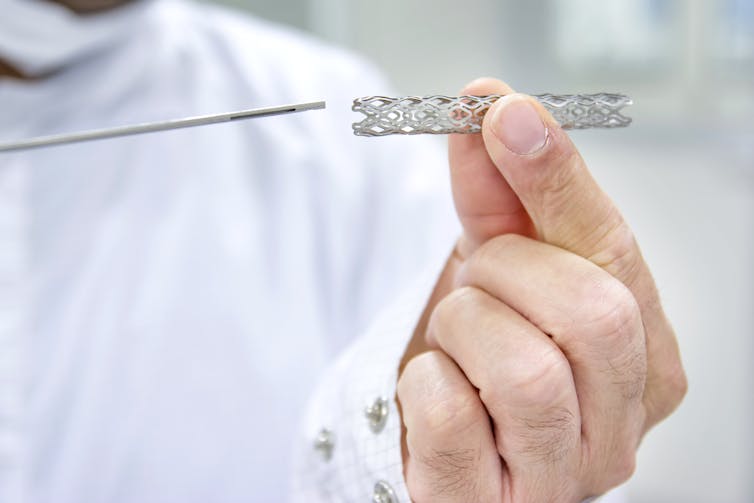Many countries have strict regulations to ensure new drugs are effective and are worth the money before doctors can prescribe them. But surgical procedures are often less strictly regulated. This can lead to people having risky surgery even though there is no clear evidence that it works. One such surgery is called subacromial decompression – one of the most common procedures to treat chronic shoulder pain.
Up to two-thirds of people experience shoulder pain during their life. This is often caused by bony spurs forming on the shoulder blade, which can lead to swelling in the surrounding area. Subacromial decompression is keyhole surgery to remove these spurs.
Several randomised control trials – the gold standard for clinical evidence – have found no evidence that subacromial decompression is effective. Two recent high-quality randomised controlled trials (RCTs) in the UK (CSAW) and Finland (FIMPACT) found that subacromial decompression is no more effective than placebo surgery – where the surgeon makes a small cut but doesn’t remove the spurs.
And a recent review of the evidence, which included the CSAW and FIMPACT studies, found high-quality evidence that subacromial decompression doesn’t improve pain, movement or health-related quality of life. Following this, a BMJ article strongly recommended that surgeons stop performing this surgery for chronic shoulder pain.
We recently investigated the extent to which this surgery is performed, given the lack of evidence to support its use. For our study, we examined the relationship between research evidence and treatment. We found that health systems around the world have been carrying out a lot of subacromial decompression surgery over the past 25 years.
Over ten years, the number of subacromial decompression procedures nearly doubled in England, from 15,112 procedures (30 per 100,000 people) in 2007-08 to 28,802 procedures (52 per 100,000 people) in 2016-17. Surgery rates were generally more than twice as high (102 to 131 per 100,000 people) in other regions (New York State, Western Australia, Florida State and Finland).
The example of subacromial decompression highlights that, without timely high-quality research, the use of surgery that doesn’t work can increase over time. It is important to identify these procedures early and run trials to examine their value. Healthcare systems need effective methods to stop surgery that doesn’t work and isn’t value for money.
Not the only surgery that doesn’t work
The situation with subacromial decompression surgery is not unique. Another example is the use of stents to open narrowed arteries to treat chest pain (stable angina). Around half a million people receive stents for chest pain each year in the US and Europe, yet a recent placebo-controlled RCT found no difference in angina pain outcomes between inserting a stent in patients with a single blocked blood vessel and using standard drugs. (Although, stents may be useful in more severe cases, for example, where more than one blood vessel is blocked.)

Also, consider keyhole surgery to clean out the knee joint, on which around US$4 billion is spent each year in the US. Recent RCTs found no evidence of effectiveness to justify the spending.
Read more: Considering knee surgery? Read this first
Given limited resources and the potential risk to patients, doctors should only recommend surgical procedures backed by evidence. We need more robust trials to evaluate surgery where there is currently not enough evidence. A balance needs to be struck between supporting innovation and preventing unnecessary treatment. Health services must develop processes that support this balance, to reduce harm to patients and get the maximum health benefit for our money.
_Clarification. An earlier version of this article suggested that using stents to treat chest pain is no better than using medicines. We have reworded the relevant paragraph to make it clear that it is only no better than medicines when a single blood vessel is blocked. _

